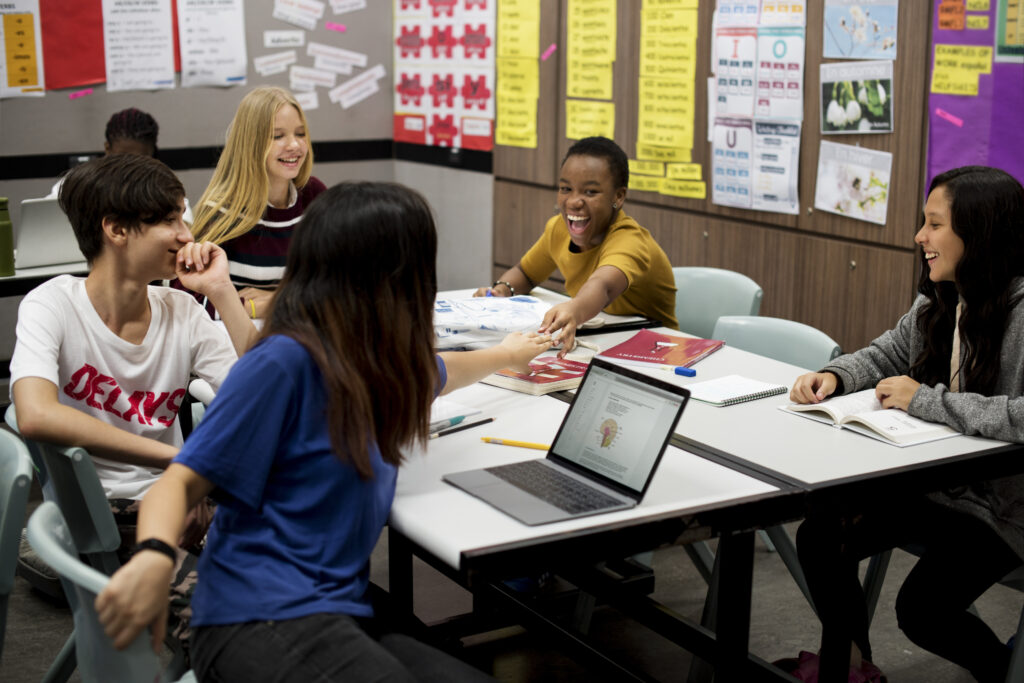
5 Questions About Reading Curricula That Can Help Multilingual Learners
There are millions of multilingual learners in U.S. schools; they make up roughly 10% of the student population,* and that population is growing.** These students face unique challenges in school as they are expected to meet the same rigorous learning standards as their native English-speaking peers while also learning to speak, understand, read, and write in a new language.
One common obstacle multilingual learners (MLs) face is that, all too often, teachers don’t feel that their instructional materials provide enough supports for students learning English. For example, the English Learners Success Forum, San Diego State University, and the RAND Corporation recently conducted a survey of teachers in districts with English learner (EL) populations greater than 10%. They found that, though “teachers [generally] agreed that their instructional materials supported certain types of language development (i.e., speaking, listening, writing, and reading)” (see page 4), “most teachers reported that their instructional materials do not include a wide variety of research-based practices that are known to support ELs…, do not believe their instructional materials are culturally or linguistically relevant…, [and] report that their instruction[al] materials do not provide adequate support to assess and improve language instruction and development” (see page 5).
Below are five questions you can ask yourself (and your team!) that can support school and system staff in evaluating how well early literacy curricular materials address the needs of MLs.^
Do the materials activate, affirm, and build on students’ funds of knowledge?^^
Consider whether and how the materials:
- Position students as valuable contributors to the learning environment.
- Remind teachers that students come with a wealth of knowledge and skills; suggest specific ways to leverage those assets strategically in the lesson (e.g., pointing out potential connections to students’ primary languages).
- Provide strategies for activating or connecting to background knowledge/schema (e.g., prompting students to share what they know, their experiences about a topic, or skill at the start of the lesson).
Do the materials make connections between primary languages and English?
Consider whether and how the materials:
- Provide guidance on how to bridge primary language skills to the new language and note specific cross-language connections (see Bridging Foundational Skills between Languages for ideas and examples specific to phonemes).
Do the materials build oral skills to support reading and writing skills?
Consider whether and how the materials:
- Include activities in which MLs practice using foundational skills vocabulary (e.g., the technical terms in the curriculum related to phonemic awareness, phonics, orthography) in their sentences (e.g., asking students to repeat how to articulate sounds in complete sentences: “To make the ___ sound, I ___ with my lips/mouth/tongue”).
- Structure activities so that students use their own languages first to allow the teacher to leverage those languages to make connections to the vocabulary used in the curriculum (e.g., asking students to describe what their mouths or lips do when they make a sound, and using words the students produce to connect to the academic or technical term).
- Provide opportunities for students to make connections between new words or concepts from the lesson to their primary languages, background knowledge, and/or experiences.
Do the materials make the content and language expectations of the lessons clear?
Consider whether and how the materials:
- Provide an explicit expectation for language practice, or a language objective, in the lesson that is connected to the target foundational skill(s), such as asking and answering questions about a decodable text they read or sharing examples of words they know that use a target sound in English and their primary language(s) and discussing the differences between languages.
- Note how to precisely model the target skills, make language and thinking visible to students by calling attention to the sounds and the choice of words, and build sentences to communicate ideas related to the topics they are learning about.
Do the materials provide opportunities for students to get feedback and reflect on their progress toward the learning expectations?
Consider whether and how the materials:
- Include a variety of formative and interim assessment ideas and resources connected to the learning expectations to identify student skill levels and when targeted instruction in small-group activities may provide needed support.
- Suggest early literacy, specifically foundational skills, assessments that are normed for MLs and offered in their primary languages, using structures based on how students learn to read in those languages (e.g., Spanish assessments that include a survey of common syllable knowledge).
- Provide prompts for teachers to respond to student work with affirming feedback such as:
- “You are making so much progress! I appreciate how you ___. That’s what good readers/writers do.”
- “Wow! I loved how you used your own language to make a connection.”
- “I see how you think that. Another way to think about it is ___.”
Better understanding where materials may have gaps can help you identify supplements that give MLs access to the tools they need to become fluent speakers, readers, and writers. If you find your materials don’t offer many of the above components, we’ve got you covered! Check out our resources Being Responsive to Multilingual Learners in Early Literacy Instruction and Bridging Foundational Skills Between Languages for tools and strategies that can help you supplement materials.
For more on the look-fors outlined here and many others that can help you evaluate how well reading materials meet the needs of MLs, check out our resource, Foundational Skills HQIM for Multilingual Learners, Characteristics and Components to Look For, and don’t miss our full library of tools and resources for supporting early literacy for multilingual learners.
more
Notes
*National Center for Education Statistics, “English Learners in Public Schools,” Institute of Education Sciences, accessed October 3, 2022, https://nces.ed.gov/programs/coe/indicator/cgf/english-learners.
**Najarro, Ileana (2023), “The English Learner Population Is Growing. Is Teacher Training Keeping Pace?,” EdWeek, accessed June 10, 2024, https://www.edweek.org/teaching-learning/the-english-learner-population-is-growing-is-teacher-training-keeping-pace/2023/02.
^English Learner Success Forum created a resource entitled,“Guidelines for Improving English Language Arts Materials for English Learners,” which outlines focus areas for curriculum publishers to consider that would better align materials to MLs’ needs. It is a useful resource for anyone interested in learning more. (The questions in this blog were partially inspired by and are aligned to the identified focus areas in the “Guidelines” document; however, this post targets foundational skills specifically—as opposed to ELA broadly—and is tailored to teachers and leaders using curricula, not those developing curricula.)
^^Carlos G. Vélez-ibáñez and James B. Greenberg, “Formation and Transformation of Funds of Knowledge Among U.S.-Mexican Households,” Anthropology & Education Quarterly, (1992), accessed October 3, 2022, https://www.semanticscholar.org/paper/Formation-and-Transformation-of-Funds-of-Knowledge-V%C3%A9lez-ib%C3%A1%C3%B1ez-Greenberg/1e80f6090d052008ad29ab58c8ff1668a5c7cb08.


